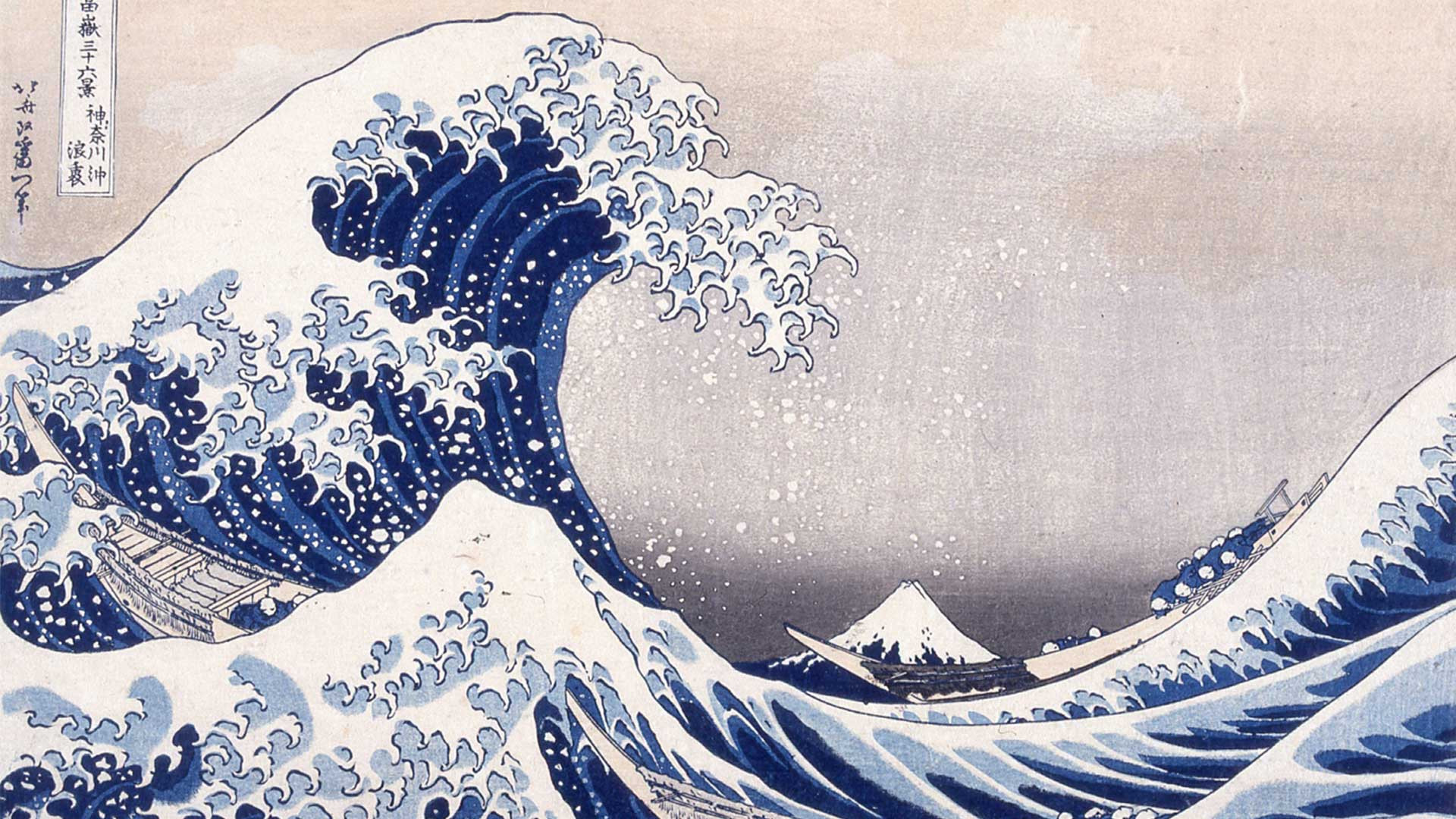This autumn, the Guimet Museum in Paris will host an unprecedented exhibition dedicated to manga. Among the masterpieces on display will be the legendary Great Wave off Kanagawa by Hokusai. On October 31, our journalist Agathe Hakoun attended its installation alongside Estelle Bauer, chief curator of Japanese collections and curator of the exhibition.
Today, it stands as one of the most reproduced images in art history. The Great Wave, originally titled Under the Wave off Kanagawa (1830–1832), by Katsushika Hokusai (1760–1849), will take center stage in “Manga, an Art Form!” at the Guimet Museum (Paris, 16th arrondissement), from November 19 to March 9. On this occasion, the institution is bringing its treasured masterpiece out of storage to display it in a dedicated gallery. We witnessed this delicate operation, offering a glimpse of the landmark exhibition that will unfold across three floors of the National Museum of Asian Arts.
Two Waves in Rotation
Hokusai’s Great Wave was printed between 5,000 and 8,000 times. Numerous museums in both the West and Japan preserve versions with slight variations between prints. In France, two are housed at the Bibliothèque nationale de France (BnF), one in Giverny, and two at the Guimet Museum. The latter will present its own prints in “Manga, an Art Form!”.
These two impressions, made from the same woodblock, are in remarkably good condition—one donated by French patron and collector Isaac de Camondo (1851–1911), and the other by Art Nouveau jeweler and collector Henri Vever (1854–1942). The Camondo print features pink clouds and stronger color gradations, while the Vever print—likely more exposed to light—has lost its clouds, displays greater contrast, and bears a visible crease mark.

Because of the fragility of these works, the museum will display them alternately — beginning with the Camondo Wave for two months, followed by the Vever version.
“We don’t exhibit it frequently, but many visitors come specifically to see it,” explains Estelle Bauer, chief curator of Japanese collections and curator of the exhibition. “We’re considering a display model similar to Japan’s — perhaps one month a year — that would become The Month of the Wave.”
How did The Great Wave become an icon of art history?
The Great Wave is part of Hokusai’s celebrated series Thirty-Six Views of Mount Fuji (1831–1833), in which each print depicts the sacred Japanese peak from a different perspective. In this work, Hokusai juxtaposes Mount Fuji with a towering, claw-like wave curling above fragile boats.
“The series was a great success in Japan, as evidenced by the number of prints produced,” notes Bauer. “It was quite a new theme for Japan — the sea is omnipresent in the country’s life, yet there were few maritime landscapes. Moreover, the use of Prussian blue — a pigment invented in 18th-century Germany and widely imported into Japan around the 1830s — gave the work a distinct appeal. Interestingly, until quite recently, The Great Wave wasn’t even the most popular print of the series; the Japanese actually preferred The Red Fuji.”

How did it also become an icon — as universally recognized today as Leonardo da Vinci’s Mona Lisa?
“It’s thanks to Westerners,” explains Estelle Bauer. “Edmond de Goncourt was the first to write about it at the end of the 19th century. In 1905, Debussy used it on the cover of La Mer. Gradually, it began to fascinate the West.”
While the Japanese admire the work for its depiction of Mount Fuji, Europeans were captivated by the power and grace of the wave itself.
“We are sensitive to the beauty of its form,” adds the curator, “and to a striking feature that Goncourt already noted in his time — the wave’s crest, which looks like claws, and the sheer strength of its composition.”

The Great Wave in Franco-Belgian Comics
In “Manga, A Whole Art!”, The Great Wave will be displayed in a separate royal-blue room, surrounded by works that resonate with it.
“Throughout the exhibition, we’ll be creating a dialogue between the museum’s heritage collections and manga, while remaining within a Japanese universe,” explains Estelle Bauer. “Manga such as One Piece clearly reference The Great Wave, but we also wanted to show that a dialogue is possible with heritage artworks and Franco-Belgian comics.”
The Wave Room will thus feature a John Galliano gown for Dior alongside original drawings by Moebius, Coco, and Alexis Dormal — all of whom reinterpret the iconic motif. Coco reuses the image of the oppressive wave to reflect her experience during the terrorist attack at Charlie Hebdo, when she felt overwhelmed. Conversely, Moebius transforms the wave’s claw-like forms to take the viewer into a dreamlike realm. Alexis Dormal, meanwhile, places The Great Wave in the Louvre’s Grand Gallery, referencing great masterpieces of Western art history such as The Raft of the Medusa and The Birth of Venus — a gathering of universal icons.
“Manga, A Whole Art!”
Musée Guimet
6 Place d’Iéna, 75116 Paris
From November 19, 2025, to March 9, 2026
Source: Connaissance desarts




